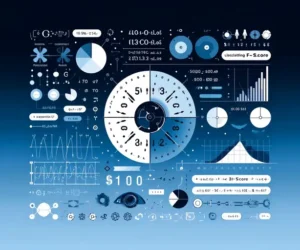
Deep Learning AI's Impact on Art History in Museums

- Analyzing and Classifying Artwork
- Providing Detailed Information and Analysis
- Generating Virtual Museum Tours
- Assisting in Artwork Restoration
- Creating Personalized Recommendations
- Detecting Forgeries and Authenticating Artwork
- Assisting in the Curation Process
- Enhancing Accessibility
- Creating Interactive and Immersive Experiences
- Helping with Digitization and Cataloging
Analyzing and Classifying Artwork
Deep learning AI can revolutionize the analysis and classification of artwork based on style, artist, and period. By training on vast datasets of art, AI models can identify patterns and characteristics unique to different artists and eras, making classification more accurate and efficient.
Enhancing Art Analysis
AI can delve into the intricate details of an artwork, analyzing brushstrokes, color palettes, and compositional elements to determine its origin. This ability surpasses traditional methods, allowing for a deeper and more nuanced understanding of art.
Facilitating Art Historical Research
For art historians, AI provides a powerful tool to classify and categorize large volumes of artwork quickly. This accelerates research and allows scholars to focus on interpretation and analysis rather than manual classification.
Here's an example of using Python and TensorFlow for artwork classification:
import tensorflow as tf
from tensorflow.keras import layers, models
# Load dataset
dataset = tf.keras.preprocessing.image_dataset_from_directory(
'path_to_artwork_dataset',
image_size=(224, 224),
batch_size=32
)
# Define model
model = models.Sequential([
layers.Conv2D(32, (3, 3), activation='relu', input_shape=(224, 224, 3)),
layers.MaxPooling2D((2, 2)),
layers.Conv2D(64, (3, 3), activation='relu'),
layers.MaxPooling2D((2, 2)),
layers.Conv2D(128, (3, 3), activation='relu'),
layers.MaxPooling2D((2, 2)),
layers.Flatten(),
layers.Dense(128, activation='relu'),
layers.Dense(10, activation='softmax')
])
# Compile and train model
model.compile(optimizer='adam', loss='sparse_categorical_crossentropy', metrics=['accuracy'])
model.fit(dataset, epochs=10)Providing Detailed Information and Analysis
AI can offer detailed information and analysis about specific artworks, enriching the experience of museum visitors and providing them with a deeper understanding of the pieces.
Enhancing Visitor Experience
With AI-powered insights, visitors can access comprehensive information about an artwork, including its history, the artist's background, and the cultural context. This can be presented through interactive displays or mobile apps.
Supporting Education
Educational programs can benefit from AI by providing students with rich, contextual information about art. AI can analyze and compare artworks, facilitating deeper discussions and learning.
Benefits of AI in Interpreting Art History
AI can interpret complex art historical data, making it more accessible and engaging for the public. It bridges the gap between scholarly research and public understanding, democratizing access to art knowledge.
Generating Virtual Museum Tours
AI can generate virtual tours of art museums, offering access to individuals unable to visit in person. These virtual experiences can be as immersive and informative as physical visits.
Enhancing Accessibility
Virtual tours make art accessible to a wider audience, including those with physical limitations or geographical constraints. AI ensures these tours are interactive, allowing users to explore and learn at their own pace.
Supporting Education and Research
Virtual tours can be used as educational tools, providing students and researchers with detailed, virtual access to museum collections. This is particularly useful for institutions lacking resources to visit museums physically.
Here's an example of creating a virtual museum tour using Python and Unity:
import unity
# Sample code for setting up a virtual tour in Unity (pseudo-code)
unity.create_virtual_environment('Museum_Hall')
unity.add_artwork('path_to_artwork_image', position=(0,0,0), description='Artwork Description')
unity.setup_navigation_controls()
unity.launch_virtual_tour()Assisting in Artwork Restoration
AI can assist in the restoration and preservation of artwork by identifying areas of deterioration or damage, thus informing the restoration process.
Identifying Damage
AI algorithms can detect subtle changes in the condition of artworks that may not be visible to the human eye. This includes detecting cracks, fading, or other forms of deterioration.
Informing Restoration Efforts
By providing precise information on the state of an artwork, AI can guide restorers in applying the most appropriate techniques and materials for preservation, ensuring the longevity of cultural heritage.
Here's an example of using Python and OpenCV for damage detection in artworks:
import cv2
import numpy as np
# Load image
image = cv2.imread('path_to_artwork_image')
# Convert to grayscale
gray = cv2.cvtColor(image, cv2.COLOR_BGR2GRAY)
# Detect edges
edges = cv2.Canny(gray, threshold1=30, threshold2=100)
# Highlight damage areas
damage = cv2.dilate(edges, None, iterations=1)
highlighted = cv2.addWeighted(image, 0.8, cv2.cvtColor(damage, cv2.COLOR_GRAY2BGR), 0.2, 0)
# Save result
cv2.imwrite('highlighted_damage.jpg', highlighted)Creating Personalized Recommendations
AI can create personalized recommendations for museum visitors based on their preferences and interests, enhancing their experience.
Enhancing Visitor Experience
Personalized recommendations guide visitors to artworks and exhibitions that align with their interests. This tailored approach can increase engagement and satisfaction.
Increasing Engagement
By suggesting relevant content, AI helps visitors discover new artworks and artists, deepening their appreciation and understanding of art. This can lead to longer visits and a greater likelihood of return visits.
Benefits of AI-Powered Recommendations
AI-powered recommendations can enhance the educational value of museum visits, making the experience more interactive and personalized. This helps in creating a more engaging and memorable visit.
Detecting Forgeries and Authenticating Artwork
AI can detect forgeries or authenticate artwork by analyzing various factors such as brushstrokes, materials, and composition, providing valuable assistance in the art market and preservation efforts.
Identifying Forgeries
AI models can analyze minute details in artworks, such as brushstroke patterns and pigment composition, to identify inconsistencies that may indicate a forgery. This technology surpasses traditional methods in precision and speed.
Authenticating Artworks
Authentication involves verifying the originality of an artwork. AI can compare new pieces with known works by the same artist, checking for stylistic and material consistencies.
Here's an example of using Python and TensorFlow for detecting forgeries:
import tensorflow as tf
from tensorflow.keras.preprocessing.image import ImageDataGenerator
# Load dataset
datagen = ImageDataGenerator(rescale=1./255)
train_data = datagen.flow_from_directory('path_to_dataset', target_size=(224, 224), batch_size=32, class_mode='binary')
# Define model
model = tf.keras.models.Sequential([
tf.keras.layers.Conv2D(32, (3, 3), activation='relu', input_shape=(224, 224, 3)),
tf.keras.layers.MaxPooling2D((2, 2)),
tf.keras.layers.Conv2D(64, (3, 3), activation='relu'),
tf.keras.layers.MaxPooling2D((2, 2)),
tf.keras.layers.Flatten(),
tf.keras.layers.Dense(64, activation='relu'),
tf.keras.layers.Dense(1, activation='sigmoid')
])
# Compile and train model
model.compile(optimizer='adam', loss='binary_crossentropy', metrics=['accuracy'])
model.fit(train_data, epochs=10)Assisting in the Curation Process
AI can assist in the curation process by suggesting unique connections and relationships between different artworks, creating more cohesive and engaging exhibitions.
Curating Exhibitions
AI can analyze various attributes of artworks, such as themes, styles, and historical context, to suggest interesting and meaningful ways to group them. This can enhance the storytelling aspect of exhibitions.
Enhancing Visitor Experience
By curating exhibitions that are coherent and engaging, AI helps museums offer richer and more enjoyable experiences to visitors. This can also highlight lesser-known works that complement well-known pieces.
Here's an example of using Python and network analysis for curation:
import networkx as nx
# Create graph
G = nx.Graph()
# Add nodes (artworks) and edges (connections)
G.add_node('Artwork1', style='Impressionism')
G.add_node('Artwork2', style='Impressionism')
G.add_node('Artwork3', style='Renaissance')
G.add_edges_from([('Artwork1', 'Artwork2'), ('Artwork2', 'Artwork3')])
# Analyze graph
connected_components = nx.connected_components(G)
print(f'Connected Components: {list(connected_components)}')Enhancing Accessibility
AI can enhance the accessibility of art museums by providing translations, audio descriptions, and other support for visitors with disabilities, ensuring a more inclusive experience.
Providing Translations
AI-powered translation services can provide real-time translations of exhibition information, making it accessible to non-native speakers. This ensures that language barriers do not hinder the enjoyment and understanding of art.
Offering Audio Descriptions
For visually impaired visitors, AI can offer detailed audio descriptions of artworks, explaining visual elements and contextual information. This enhances their ability to appreciate and understand the art.
Here's an example of using Python and gTTS (Google Text-to-Speech) for creating audio descriptions:
from gtts import gTTS
# Sample text
text = "This is a detailed description of the artwork, including visual elements and historical context."
# Convert text to speech
tts = gT
TS(text=text, lang='en')
tts.save("audio_description.mp3")Creating Interactive and Immersive Experiences
AI can create interactive and immersive experiences within museums, allowing visitors to engage with the artwork in new and innovative ways.
Enhancing Interpretation and Education
Interactive displays and augmented reality (AR) experiences powered by AI can provide visitors with engaging and educational content, making their visit more informative and enjoyable.
Preserving and Restoring Artworks
Immersive technologies can simulate restoration processes, allowing visitors to see how artworks are preserved and restored. This educational content can raise awareness about the importance of conservation.
Here's an example of creating an interactive AR experience using Python and Unity:
import unity
# Sample code for setting up an AR experience in Unity (pseudo-code)
unity.create_ar_environment('Gallery')
unity.add_ar_artwork('path_to_artwork_image', position=(0,0,0), description='Interactive Artwork Description')
unity.setup_ar_interaction_controls()
unity.launch_ar_experience()Helping with Digitization and Cataloging
AI can assist in the digitization and cataloging of museum collections, making them more easily accessible for research and study.
Benefits of Digitization
Digitization preserves artworks by creating high-quality digital copies, which can be studied and enjoyed without risking damage to the originals. It also makes collections accessible to a global audience.
Cataloging Collections
AI can automate the cataloging process, tagging artworks with metadata such as artist, period, style, and medium. This structured data makes it easier for researchers and enthusiasts to find and study specific pieces.
Here's an example of using Python and OpenCV for digitizing artwork:
import cv2
# Load image
image = cv2.imread('path_to_artwork_image')
# Resize and enhance image
resized_image = cv2.resize(image, (1024, 1024))
enhanced_image = cv2.detailEnhance(resized_image, sigma_s=10, sigma_r=0.15)
# Save digitized image
cv2.imwrite('digitized_artwork.jpg', enhanced_image)Deep learning AI is transforming the field of art history in museums. From analyzing and classifying artwork to providing detailed information and generating virtual tours, AI is enhancing the way we experience and understand art. It assists in restoration, offers personalized recommendations, detects forgeries, aids in curation, enhances accessibility, and creates interactive experiences. Additionally, AI helps with the digitization and cataloging of collections, ensuring that art is preserved and accessible for future generations. By leveraging AI, museums can offer richer, more engaging experiences and deepen our appreciation of art.
If you want to read more articles similar to Deep Learning AI's Impact on Art History in Museums, you can visit the Applications category.



You Must Read